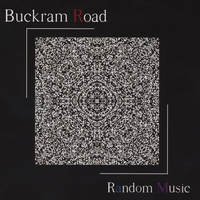
Baldrige and Local Government: Isn't This a Private Sector Program?
"Although the Baldrige program began as a way for American business to compete more effectively around the world, the framework was developed to promote quality and excellence, not simply to drive profits. The seven criteria form a set of values and core concepts that any organization—public or private—can use to its advantage.
Public school systems, colleges, health care organizations, and numerous service businesses have won Baldrige awards. There is no reason to believe that cities and counties would not benefit from the framework and the rigor associated with the process. In fact, it is probably more accurate to say that local government has a lot of catching up to do if it wishes to be compared with the best Baldrige organizations, regardless of sector.
Baldrige for government can work because the seven criteria are built on a set of interrelated core concepts and values that promote organizational excellence. Here are brief descriptions of the core values and concepts that underpin the Baldrige model.
Visionary leadership. The management team should serve as role models through ethical behavior and personal involvement in coaching and developing future leaders. Both strategy and customer/citizen goals need to be aligned. Commitment and initiative are built throughout the organization.
Customer-driven excellence. Customer- or citizen-driven excellence is a strategic concept. It is devoted to obtaining and retaining citizen support as well as maximizing competitive position. It is critical to understand and develop citizen-focused outcomes.
Organizational and personal learning. Learning results in a more satisfied and versatile employees who stay with the organization. Bright, innovative employees provide a distinct advantage in meeting the needs of the community.
Valuing employees and partners. An organization’s success depends increasingly on the diverse backgrounds, knowledge, skills, creativity, and motivation of all its employees and partners, including both paid staff and volunteers.
Agility. A capacity for rapid change and flexibility is a key to success. Organizations face ever-shorter cycles for introducing new or improved programs and services as well for meeting expectations to deliver them more rapidly.
Focus on the future. Creating a sustainable organization requires under-standing the short- and long-term factors that affect the organization and its environment. Developing employees and partners along with creating opportunities for innovation are key concerns.
Managing for innovation. Making meaningful change improves your services, programs, processes, and operations to create new value for the organization’s stakeholders. Innovation builds on the accumulated knowledge of your organization and staff.
Management by fact. An effective administrative management system depends on the measurement and analysis of performance. If you can’t measure it, you can’t manage it. Selecting key performance measures and indicators is critical.
Social responsibility. An organization'€™s leaders should stress responsibilities to the public, ethical behavior, and the need to foster improved communities. Organizations should not only meet regulatory requirements, but treat those requirements as opportunities for improvement beyond mere compliance.
Focus on results and creating value. An organization’s performance measures need to focus on key results. Results should be used to create and balance value for your key stakeholders—customers, staff, the community, vendors, partners, and the general public.
Systems perspective. The Baldrige criteria provide a systems perspective for managing your organization and its key processes to achieve results in the form of performance excellence. The seven Baldrige categories and the core values form the building blocks and the integrating mechanism for the system. Successful management of overall performance requires organization-specific synthesis, alignment, and integration."











































No comments:
Post a Comment